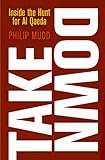Takedown : Inside the Hunt for Al Qaeda / Philip Mudd.
Material type: TextPublisher: Philadelphia : University of Pennsylvania Press, [2013]Copyright date: ©2013Description: 1 online resource (216 p.)Content type:
TextPublisher: Philadelphia : University of Pennsylvania Press, [2013]Copyright date: ©2013Description: 1 online resource (216 p.)Content type: - 9780812244960
- 9780812207880
- 363.325 163092 B 23
- JK468.I6 M83 2013eb
- online - DeGruyter
- Issued also in print.
| Item type | Current library | Call number | URL | Status | Notes | Barcode | |
|---|---|---|---|---|---|---|---|
 eBook
eBook
|
Biblioteca "Angelicum" Pont. Univ. S.Tommaso d'Aquino Nuvola online | online - DeGruyter (Browse shelf(Opens below)) | Online access | Not for loan (Accesso limitato) | Accesso per gli utenti autorizzati / Access for authorized users | (dgr)9780812207880 |
Frontmatter -- Contents -- Preface -- Chapter 1. The 9/11 Aftermath -- Chapter 2. A Return to Langley -- Chapter 3. The Spreading Threat: Moving Beyond the Core of Al Qaeda -- Chapter 4. The Second War: The Intelligence Problem of Iraq -- Chapter 5. A New View at CIA : Deputy Director of the Counterterrorist Center -- Chapter 6. The Years of Threat -- Chapter 7. Watching Threats at Home: The FBI Calls -- Chapter 8. One More Transfer: Intelligence at the Department of Homeland Security -- Index
restricted access online access with authorization star
http://purl.org/coar/access_right/c_16ec
On September 11, 2001, as Central Intelligence Agency analyst Philip Mudd rushed out of the Eisenhower Executive Office Building next to the White House, he could not anticipate how far the terror unleashed that day would change the world of intelligence and his life as a CIA officer. For the previous fifteen years, his role had been to interpret raw intelligence and report his findings to national security decision makers. But within weeks of the 9/11 attacks, he would be on a military aircraft, flying over the Hindu Kush mountains, en route to Afghanistan as part of the U.S. government's effort to support the fledging government there after U.S. forces had toppled the Taliban. Later, Mudd would be appointed deputy director of the CIA's rapidly expanding Counterterrorist Center and then senior intelligence adviser at the FBI. A first-person account of Mudd's role in two organizations that changed dramatically after 9/11, Takedown sheds light on the inner workings of the intelligence community during the global counterterror campaign.Here Mudd tells how the Al Qaeda threat looked to CIA and FBI professionals as the focus shifted from a core Al Qaeda leadership to the rise of Al Qaeda-affiliated groups and homegrown violent extremism from Europe, the Middle East, and Asia. As a participant in and a witness to key strategic initiatives-including the hunt for Osama bin Laden and efforts to displace the Taliban-Mudd offers an insider's perspective on the relationships between the White House, the State Department, and national security agencies before and after the invasions of Iraq and Afghanistan. Through telling vignettes, Mudd reveals how intelligence analysts understood and evaluated potential dangers and communicated them to political leaders.Takedown is a gripping narrative of tracking terrorism during what may be the most exhilarating but trying times the American intelligence community has ever experienced.
Issued also in print.
Mode of access: Internet via World Wide Web.
In English.
Description based on online resource; title from PDF title page (publisher's Web site, viewed 24. Apr 2022)


